Erika Nelson is a visionary artist, educator and one of America’s foremost experts and speakers on the World’s Largest Things. She is a national researcher and speaker on Grassroots Art environments, Roadside Attractions and Architecture, and the World’s Largest Things. Nelson is also the founder and curator of a unique and innovative traveling roadside attraction and museum called “The World’s Largest Collection of the World’s Smallest Versions of the World’s Largest Things.”
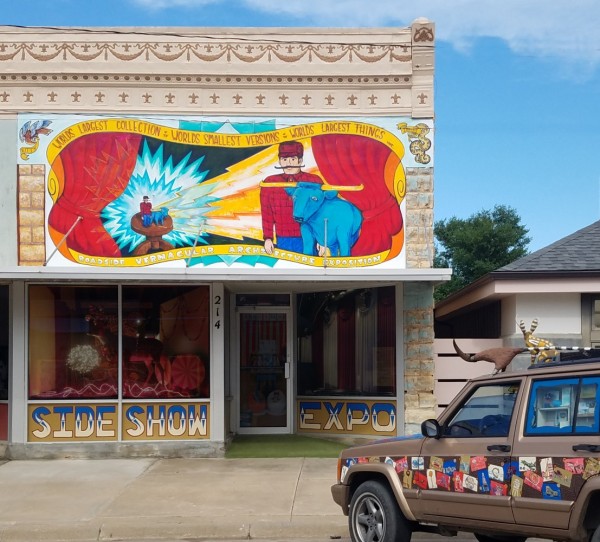
Roadside Sideshow Expo in Lucas, KS
Can you introduce yourself and tell us a little bit about your creative practice?
I am an artist working in rural Kansas, making work that celebrates the untold stories and overlooked elements around us, responding to ideas or environments inhabiting a specific place. My work is designed to remind people of the wonders found in their own backyards, as seen through new eyes.
Best known as the creator of the World's Largest Collection of the World's Smallest Versions of the World's Largest Things (formerly housed in a series of mobile museums, then a traveling Sideshow Extravaganza, now housed at the Roadside Sideshow Expo in Lucas), I have a parallel site-specific temporary public art practice that explores parallel thoughts, with some of the wheres and whys overlapping.
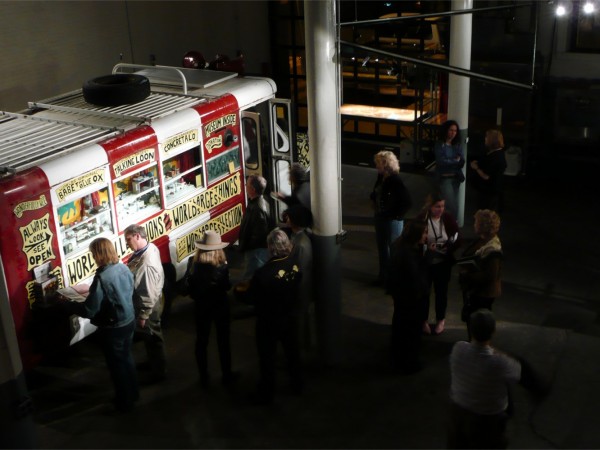
The Original WLCoWSVoWLT (World's Largest Collection of the World's Smallest Versions of the World's Largest Things)
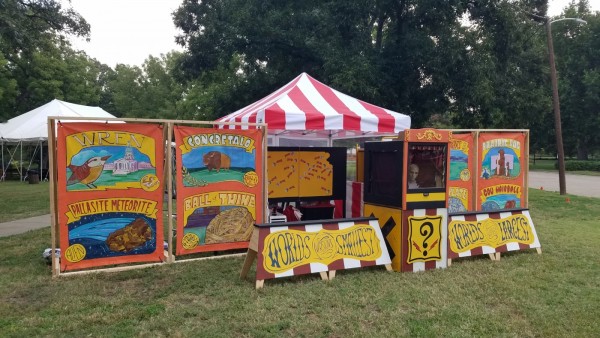
Kansas Sideshow Extravaganza
My own practice embraces the duality of transience and permanence, a reflection of my early history. Our family had a permanent home during the school year, in a small town with a deeply rooted history. Summers, holidays, and extended weekends would find our family on the road, covering miles and miles of highways and byways, crisscrossing the U.S. to our home of the week or month or year.
Traveling now from event to event, residency to residency, public art project to project, roadside attraction to attraction, I continue exploring dual identities.
The roadside attractions billed as ‘World’s Largest Things’ that make up the bulk of my explorations also have dual identities, dual purposes, dual viewpoints. The towns and communities erecting these identity markers are creating cultural icons, symbols, and representations of who they are. Visitors and explorers coming to these monuments see these iconic structures as items built for them, tourist attractions designed to entice the traveler and make them stop for a moment. Visitors may or may not consider place, location, or the home they are visiting, the Here-ness, from the builders’ points of view. Instead, they bring their own complementary experience to a common geographic place.
My practice examines these perspectives, exploring the transient yet rooted stories that intersect at points on the atlas. I create hitches in the traditional systems through alterations to the built environment, bringing attention to overlooked elements in our everyday world, surprising viewer into temporary states of wonder.
I’ve built this path as a way to create what I want to see in the world, or re-create an inner world that I inhabited as a child, but in exterior form. The creation of resources, the uplifting of the commonplace, the celebration of the ignored have culminated, for me, in a practice housed a rural environment with embedded oddities – a town with a deeply rooted creative streak, and the room to fully explore the convoluted paths of concept and practice.
How did you become interested in the world of art environments?
When I was little, Grandma used to stop by a place with signs all over the yard, and sometimes talk to the owner. It was mid-Missouri, and I'd find out later that it was Jesse Howard. Once I was able to drive myself places, I was drawn to anyone embellishing their cars, their properties, with art or junk or collections. Going through the University system and on to a 'normal' job (broadcast designer - it didn't last long) I kinda' lost touch with the celebration of individuality, but I think my own inner need for non-mainstream expression and the celebration of the same won out, so I went back to get my terminal degree. During those years, I'd keep myself sane by driving fast and far anytime I had three days in a row, combing the highways and biways for that spark that seemed to be missing in the paths I was told led to 'the real world.' The search for expression outside of the institutional system became the 'real world' I was seeking.
Eventually, I would move on the road full-time. I sold everything that wouldn't fit in a small storage shed (which was mostly an art installation that traveled to galleries, and would land in the storage shed in between engagements), converted a small public transportation bus into my home, and decided to make a life visiting self-made worlds, roadside attractions, and points of interest discovered along the way (which wasn't really 'along the way' as I didn't have a destination). I lived this way from 2001 to 2003, when I landed in Lucas Kansas in a house directly next door to S.P. Dinsmoor's Garden of Eden.
I've been informally involved in art sites through the interconnected network of creatives that I've befriended and visited through my on-the-road years and through repeat visits, stays, conversations, festivals, and mutual support.
I became more formally involved with art environments when I joined the preservation crew working on the Garden of Eden, managed the rescue and preservation of a sister site for Lucas (Roy and Clara Miller's Park) a few years later, then joined the crews for additional sites in Georgia (Pasaquan) and then again when restoring my friend's site in Mullinville KS (M.T. Liggett). My partner and I are now in the middle of restoring Florence Deeble's rock garden here in Lucas, and I've advised on three other site preservation projects.
You've done quite a bit of road tripping in the U.S. What do you love about traveling in this way? Any good anecdotes or advice to share?
I lived on the road full-time for two years, mostly in the central corridor of states (Minnesota, Kansas, Texas) then overwintering on BLM land dotting the California/Arizona border. Once I moved to Lucas, I set up an artistic practice based on touring, with residencies, Art Car parades, lectures, and guest teaching opportunities setting the anchor points and mapping out convoluted routes in between collecting stories of world's largest and continuing to visit artists building environments and self-built worlds and grottos that had transitioned to tourist attractions after the artist had passed. I'd usually spend 6 - 8 months on the road, coming back to Lucas as a home base in between. That started to slow down a little by 2017 - 2018, and came to a full stop in 2020. We'll see how the new phase and the road relate, but it's still a core facet in my own explorations (artin', writin', and fixin').
It's more of a 'life on the road' than roadtripping - it's not recreational, it's not a vacation from a job or a sedentary life, which is what I usually think of when someone says Road Trip. I'm not sure how that will change in the next few years, as the former Mobile Museums have transitioned to a more traditional storefront form in the Roadside Sideshow Expo. The formal artmaking installation work still depends on responding to specific sites, so there's still a lot of travel involved in that realm, temporarily relocating to the installation site after repeated visits for the duration of the artwork, then de-installing and coming back home.
Travel-wise, there are LOADS of anecdotes and travel tips, but that may be a whole 'nother set of paragraphs! I do tell my favorite stories in this TEDx talk from 2020.
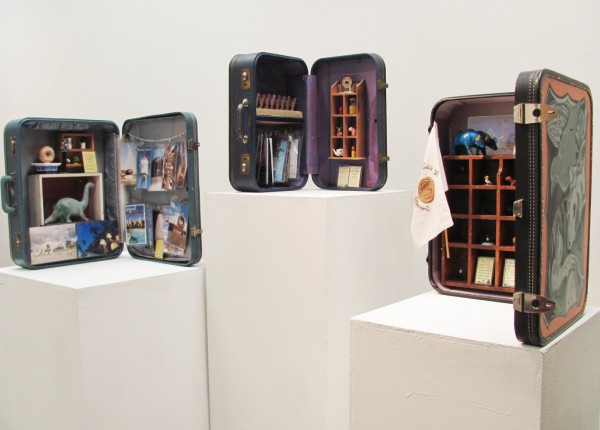
Sideshow Trunk Interior
How did you land in Lucas, Kansas, and end up involved in the Garden of Eden? What's your role there? What are your hopes for the site?
When I decided to move on the road, I would seek out rural towns with an embedded art scene. I remembered that once during grad school, we took a bus tour to see Kansas sites, so I re-created that tour. One of those stops was Lucas. It was a hot summer, and there was a cool lake nearby with good camping, so I stayed for awhile. That initial 'awhile' ended up being extended when the bus broke down one day on the way to the campsite, so I ended up staying in town at a local's extra house. While the bus was repaired, I volunteered at the local cultural institutions (Garden of Eden, Grassroots Art Center), and headed off to the desert southwest once the bus was repaired.
But, before I left, I attended an auction. At that auction, a house sold for $1200. An entire house, with a roof and windows. I thought "Huh. I'm living in a bus, and I could probably find $1200...." and the seed was planted. I saw that a little old house was for sale right next door to the Garden of Eden, so I wrote down the realtor's number.
I kept thinking about that little house, right next to such an amazing place, and called. After some negotiation, I ended up purchasing the house for cash, over the phone, while living in the desert in Arizona. I had just built the inaugural California tour, so completed that month-long excursion, and then headed to Lucas to figure out if I could live in such a small town (pop. 400 on a good day) and make a life.
Now, I've lived in Lucas longer than I've lived anywhere, and the house has become a home. Sometimes just a home base for excursions, but I do think Lucas views me as a local. Ish.
Garden of Eden-wise, I became friends with the owners (it was owned by a set of shareholders, and incorporated as a business), helped support the old owners when they decided to sell to Kohler for restoration, and then helped form the Friends of S.P. Dinsmoor's Garden of Eden non-profit to receive the Garden once restoration was complete. I was honored to be on the restoration crew during the in-between, and then served on the Garden of Eden board until I transitioned to my current position as the Cultural Resources Director.
As with all of the staff and board, our primary goal is to caretake the Garden of Eden in accordance with Dinsmoor's wishes, protect the integrity of the site, and build a stable financial and conceptual structure that will assure the Garden's health as the staff and board change, as the town of Lucas grows and shrinks. I can see it from my windows, walk by it on the way to the post office, and am reminded of its impact on the world of self-made worlds every time I see a stranger's face light up when they turn the corner and see the towering structures set against the prairie sky. I want to preserve that wonder for the next wanderer who is also looking for a deeper reality, looking for a world where people can create their own realities, interrupting our own.
Does your interest in art environments (as a genre or specific sites) impact your own practice? How so?
The two are tied when it comes to visiting friends who are building sites, or building my own environments, or as a part of that continual roadside exploration. My own practice is split between a few different modes, so it's hard to say which parts are impacted to what extent in any of the separate but parallel lines, but they're all interconnected. The radical nature, the spirit of creation, the eschewing of societal rules, all continually inform and influence my own work, my own resolve to create truer work. The people building the sites and the visits with those people, the friendships, the insistence on feeding your own creative spark ('...and you're a damn fool if you don't!' - m.t. liggett) has been an inner drive, or a wake-up when that drive seems to falter.
Specific sites that have had the most influence: Howard as the first, Tinkertown as the reminder to get back to celebrating individuality, Leonard Knight at Salvation Mountain welcoming me into his care and a safe harbor during the California tour, M.T. Liggett being a 15-year friend and instigator and caller-of-bullshit when I'd show up in an artistically depressive state. And, of course, the Garden of Eden.
There are also professional overlaps and influences, but those are maybe less interesting. I do get asked to lecture about self-built worlds fairly often, both as forms of expression as well as their preservation or restoration. I write for publications, trade journals, industry magazines, and cultural institutions about the intersect of art and rural, environment makers and institutions, and roadside culture. I also act as a consultant for the State of Kansas in their rural policy and folk and traditional arts programming. These parallel strings sometimes cross, often expand into full-blown hanks of investigation and inspiration, and inevitably get tied up into my own theories and philosophies, informing my own creative practice.
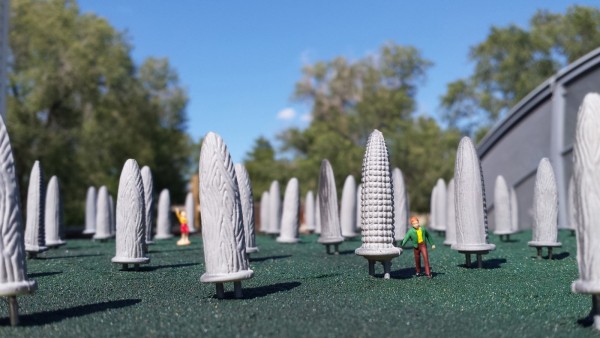
Dublin, Iowa Field of Corn
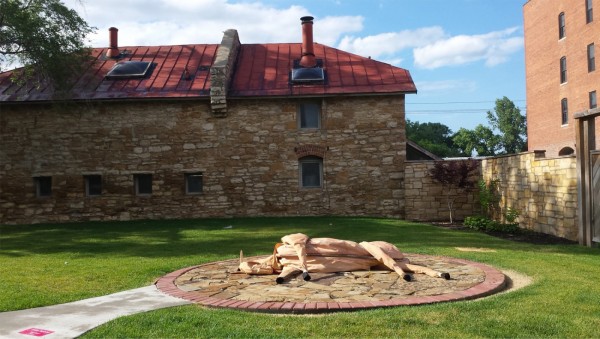
Dun Deal Beating a Dead Horse
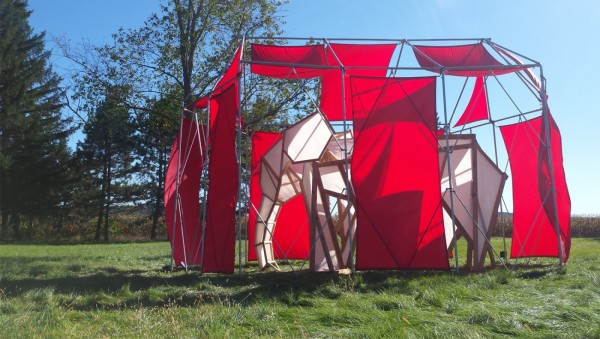
Lucky 13 Elephant in the Room
This interview with Erika Nelson was conducted by Annalise Flynn via email December 2022.
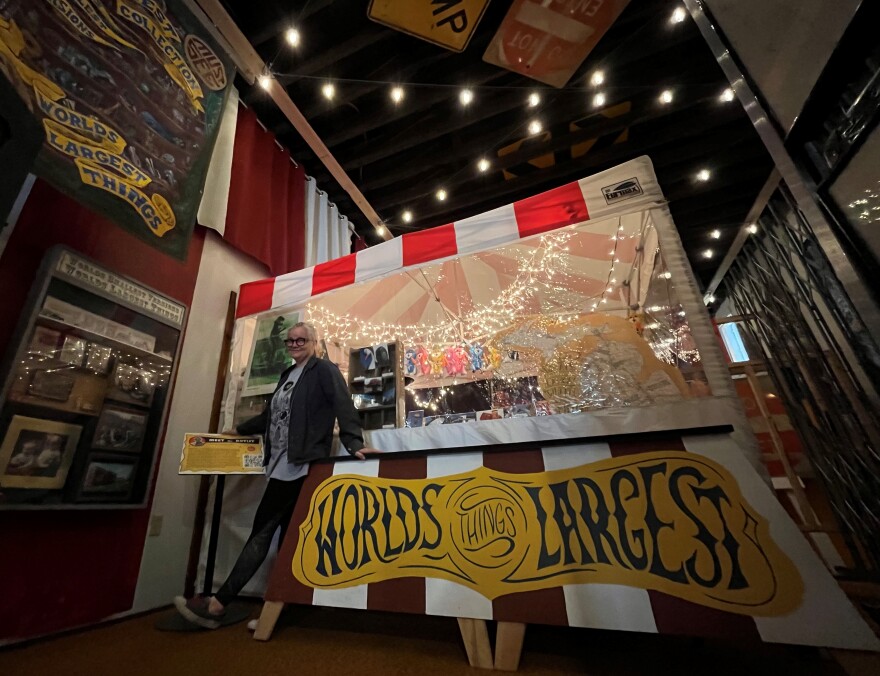

Post your comment
Comments
No one has commented on this page yet.